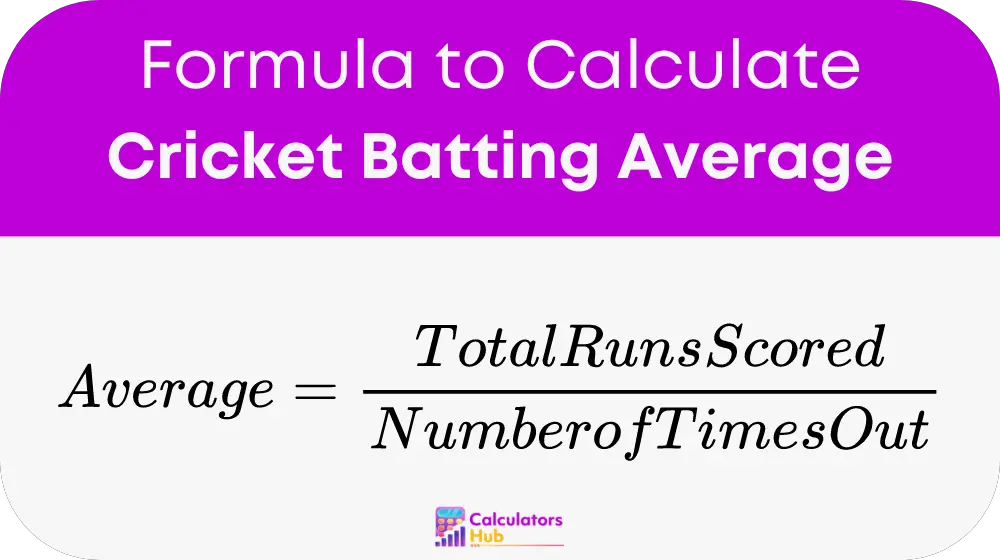A cricket batting average calculator simplifies the process of determining a player's batting efficiency. By inputting the total runs scored and the number of times a player has been out, this tool provides a quick and accurate measure of performance, which is particularly useful for comparisons and player assessments.
Formula of Cricket Batting Average Calculator

- Total Runs Scored: This figure represents the aggregate of runs a player has scored over their career or during a specific period. It is a fundamental component of the batting average calculation.
- Number of Times Out: This number indicates how often a batsman has been dismissed and is crucial in determining their average; the lower the frequency of dismissals per runs scored, the higher the batting average.
Reference Table for Common Terms and Calculations
| Term | Definition | Example Calculation |
|---|---|---|
| Innings | An innings is the individual part of a team's batting or bowling in cricket. | If a player bats in 10 different matches and gets a chance to bat each time, they have 10 innings. |
| Run Rate | The average number of runs scored per over (six deliveries). | If a team scores 300 runs in 50 overs, the run rate is 300/50 = 6 runs per over. |
| Strike Rate | Measures how quickly a batsman scores (runs per 100 balls faced). | If a batsman scores 120 runs from 80 balls, the strike rate is (120/80)*100 = 150. |
| No Balls | Illegal deliveries not counted as legitimate balls but runs scored are added to the batsman's score. | If a bowler delivers 2 no balls in an over, and each leads to 2 runs, the batsman gains 4 extra runs. |
| Wickets | Refers to the number of times batsmen have been dismissed. | If a bowler takes 5 wickets in a match, it means they have dismissed 5 batsmen. |
| Boundaries | Runs scored from the ball crossing the boundary (either as fours or sixes). | If a batsman hits 12 fours (4 runs each), the total from boundaries is 12*4 = 48 runs. |
| Duck | When a batsman gets out without scoring any runs. | If a batsman is dismissed on the first ball without scoring, it is called a "duck". |
Example of Cricket Batting Average Calculator
Consider a player who has scored 1,000 runs and has been out 20 times. Using the formula:
Batting Average = 1,000 / 20 = 50.0
This example shows the player's batting average is 50.0, which is consider excellent in professional cricket.
Most Common FAQs
It provides an average score a player achieves before getting out, offering insights into their reliability and skill.
A batting average might not account for the quality of the opposition or the match conditions, which can skew its interpretation.
Batting averages tend to be higher in Tests due to the longer format, allowing players to score more freely compared to the limited-overs formats.